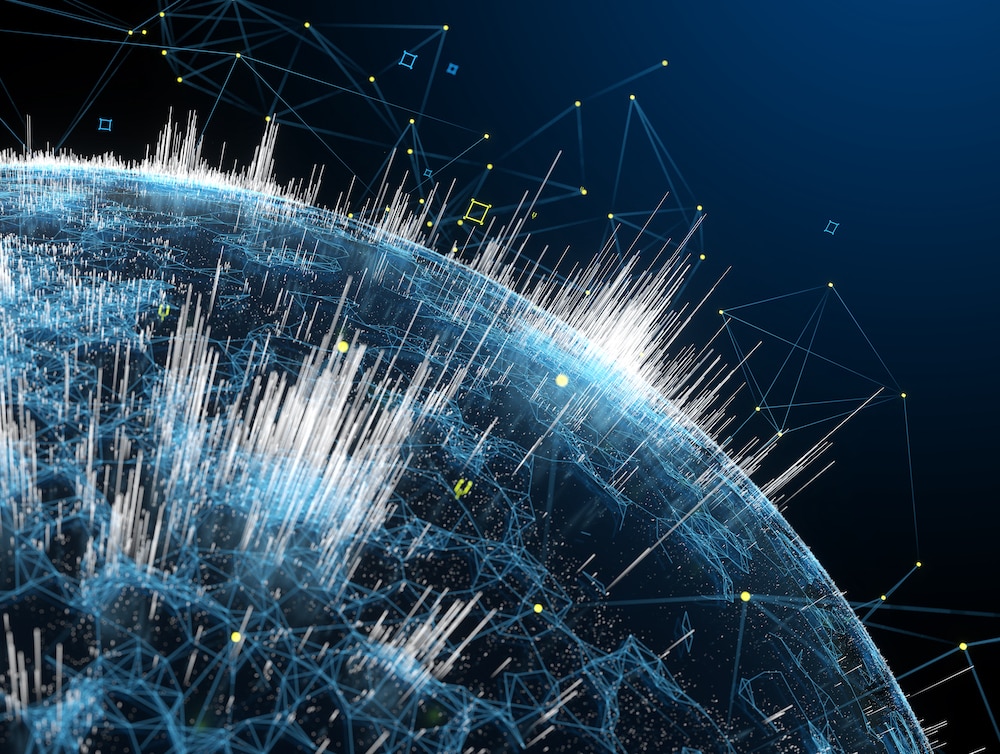Create a free profile to get unlimited access to exclusive videos, sweepstakes, and more!
Can all our intelligence give the planet a mind of its own?
If we want to save the planet, we have to think for it.

Earth began as a huge space rock. Somewhere in time, microbial life-forms emerged on that rock, and they diverged and evolved and interacted with nonliving features of the planet, from soil and water to the atmosphere, creating a biosphere. Then humans appeared.
Humans began to create a technosphere. Meaning, hominids and then homo sapiens started to come up with systems and technologies of their own that would eventually join forces to become our technosphere — everything we have created or modified. This technosphere is still largely unfinished for the same reason that it is also problematic. The biosphere gives itself back what is depleted. The technosphere does not work with the biosphere, but mostly against it.
If the collective activity of biological systems can breathe life into a planet, then the collective cognitive activity of human beings that goes into the technosphere might give it a sort of mind of its own. Researcher Adam Frank of the University of Rochester, who led a study recently published in the International Journal of Astrobiology, believes intelligence on a planetary scale could be possible if the technosphere and the biosphere merge. It is only when the technosphere can put back what it takes from the biosphere that it will be mature.
“It’s all about feedback loops,” Frank told SYFY WIRE. “The biosphere became robust and showed some degree of cognitive activity on a large scale with a dense network of feedback loops so if there was a perturbation, it would be brought back to a habitable state.”
Our biosphere can press its own reset button. If something throws off a feedback loop (such as a natural disaster), the biosphere will eventually correct itself because of all its linked elements working to bring it back into that feedback loop. Just think of the destruction caused by the asteroid that ended the dinosaurs. The organisms that did survive had to figure out new ways to stay alive. These both relied on and contributed to other organisms and systems that were affected. It took millions of years, but the biosphere did correct itself and reset the planet.
Unfortunately, the same can’t be said for the technosphere. It does rely on the biosphere, but contributes next to nothing. Frank used the analogy of our global finance system. It allows for investments in harmful technologies like power plants fueled by coal, or the gasoline industry that is continues to deplete irreplaceable fossil fuels. Someone can go ahead and build a plant that burns immense amounts of coal, but there is no feedback loop. They are taking coal from the Earth, producing massive amounts of pollution, but it ends there. Nothing is given back.
“There’s nothing intelligent or purposeful about how we take energy and matter out of the technosphere,” said Frank. “We throw it away as opposed to having an intelligent system in which the material that’s been used goes back to the biosphere [and] is reused and repurposed.”
Somehow, the many different layers that make up the biosphere are capable of self-maintenance and self-production, using material from other layers and then recycling it, putting it back into the system to be used again in a never-ending feedback loop. The mycorrhizal network of fungus that lurks beneath tree roots is one such marvel. When a part of the forest is under stress and needs more nutrients, that information is conveyed through the system, which supplies it with the nutrients it needs. The entire forest’s survival depends on this.
Meanwhile, humans will touch a piece of plastic for seconds before it gets trashed and ends up spending hundreds of years in a landfill. More biodegradable materials are now surfacing, such as plastics derived from sugars. These are even tougher than conventional plastic, but they can still decompose and be absorbed into the soil, whose nutrients will feed a sugarcane plant somewhere, and the whole process will begin again. That establishes a feedback loop between the biosphere and the technosphere. Now we need to get everything to work that way.
So what would planetary intelligence look like to Frank? There would have to be feedback loops as strong as the biosphere’s built into the technosphere, and also feedback loops between the technosphere and biosphere. This is where we will have to get to if we don’t want to our civilization to extinguish itself.
“It would be a complex adaptive system,” he said. “Our biosphere should only be used in ways that enhance it, which can then enhance the technosphere, with each layer affecting that above and below it. The common good has to be what you build the whole system off of.”
Understanding the properties of a (hypothetical) alien civilization that has not self-destructed might help us in the search for alien technosignatures. Maybe they could tell us something.


























